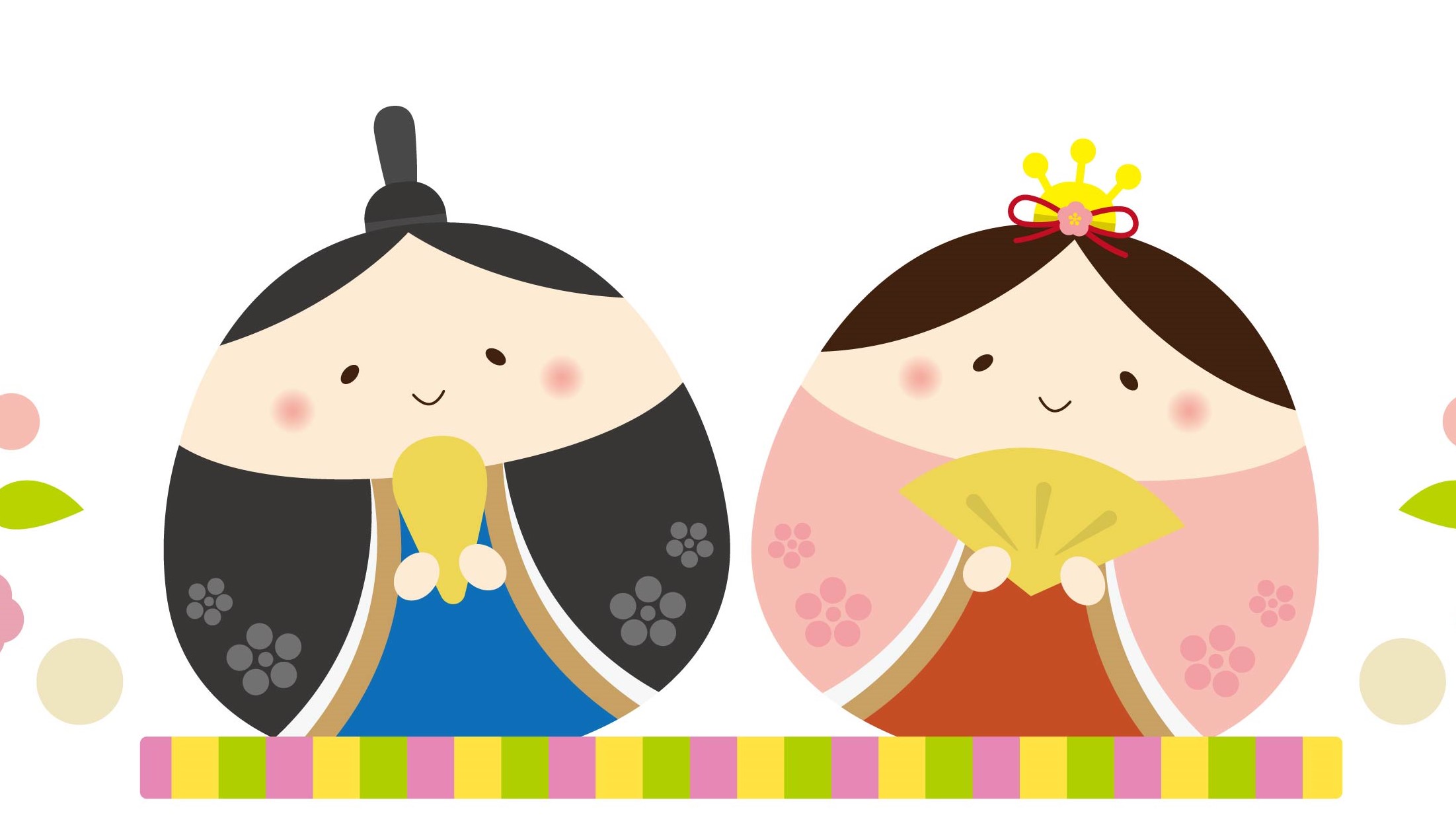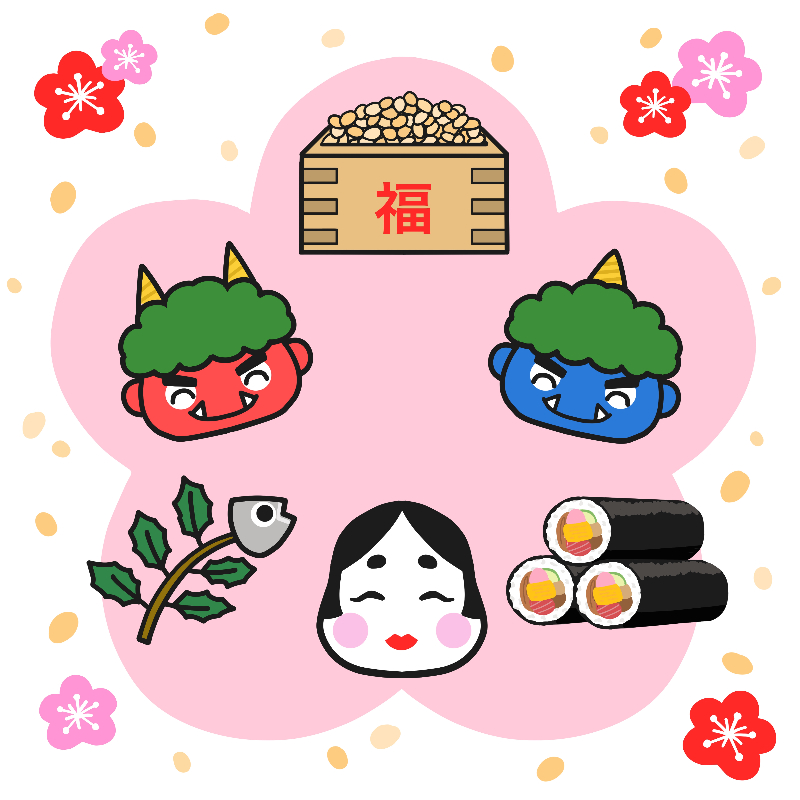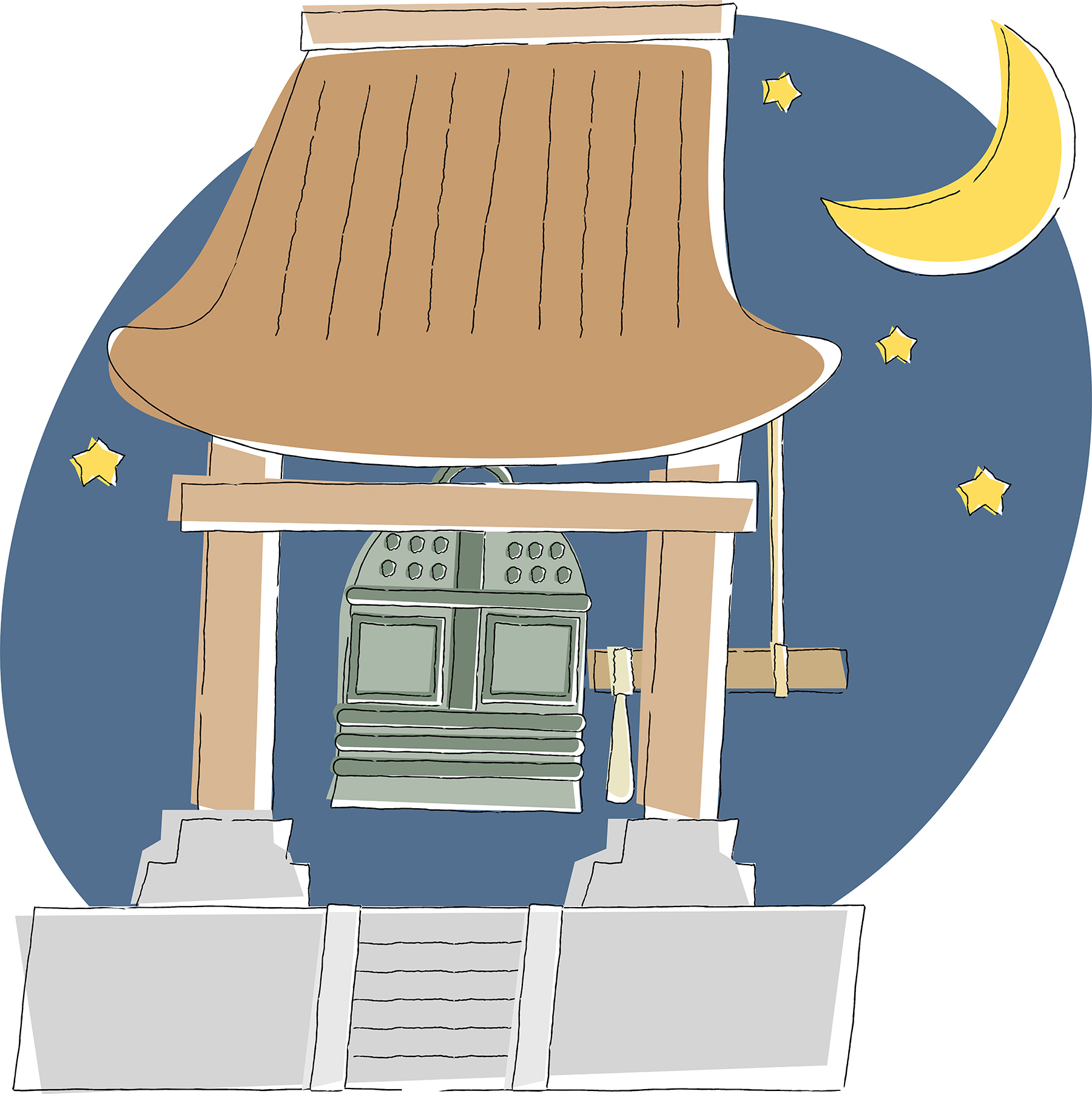
BOARD GAME: Konbini
 In groups, students play a board game where they have to make their way around a Japanese convenience store. The winner makes it to the EXIT first.
In groups, students play a board game where they have to make their way around a Japanese convenience store. The winner makes it to the EXIT first.
Pre-task
To play コンビニすごろく, students need to know the names of items and services at convenience stores in Japan. These are some suggested pre-tasks which enable students to be familiar with Japanese convenience stores and their products and services. To check their names, please refer to Cultural Notes below.
a. True or False Quiz
- There are 10,000 コンビニ in Japan. (×) 58,000
- コンビニ are open 24 hours. (O)
- コンビニ are closed on Christmas and New Year’s Day (×) Never closed
- There is a toilet in a コンビニ. (O)
- You can make a reservation or buy a ticket for a movie, play or concert. (O)
- There are no ATMs in a コンビニ. (×)
- コンビニ sell different kinds of おべんとう for each season. (O)
- The most sold items in a コンビニ are books and magazines. (×) おべんとう
- All コンビニ sell alcohol. (×) Only some. A licence is required.
- You can ask for hot water in a コンビニ for your instant noodles. (O)
- You can browse through books and magazines in a コンビニ. (O)
- In Japan the first コンビニ appeared 30 years ago. (×) 50 years ago
- You can charge your mobile phone at a コンビニ (O)
b. Familiarisation with コンビニ
If possible, teachers should give students the opportunity to see (and taste) Japanese convenience store products.
Show students the interesting video and information provided on the “Erin’s Challenge” website.
https://www.erin.jpf.go.jp/en/lesson/04/
To familiarise students with vocabulary for products and services, teachers can make small cards from the コンビニ pictures below and play games such as かるた (Grab). Flash cards can also be made for games such as ‘What’s missing?’
C. Additional Activities with コンビニ
To practise talking about shopping and prices, the following games can be played. For more information on how to play the games please click on Teacher’s notes below.
- Three hint game
- They Went Shopping
- The Price is Right
- Stocktaking (information gap)
- Role play and skits
Preparation
Print out the Konbini game sheet (on A3 paper) and sold out (うりきれ)cards to prepare class sets. Pieces of coloured paper cut into squares can be used as markers.
Procedure
This game is similar to the ‘Snakes & Ladders’ board game. The players throw the dice and move markers accordingly. 2 dice are used to allow the game to proceed quickly. Who will start can be decided by じゃんけん (Rock, Scissors, Paper). The player calls out the number rolled after throwing the dice.
When a player lands on a product/service square, s/he must say what the product or service is. The vocabulary appears on the square, so students may be able to read it loud. When a player lands on a square with the word うりきれ (sold out), they must pick up a card, read the instructions out loud and follow the instructions. The first player to reach the でぐち (exit) is the winner.
Note the words for going to a square: すすんで – go forward / もどって – go back
Variations
- For beginner level learners, simpler うりきれ cards can be made based on the language students have learned.
- At a more advanced level, if students are familiar with verbs, when they land on a square they can be required to say what is done with the product.
Example:
おにぎりを たべます。 コピーを つかいます。 くちべにを ぬります。
ジュースを のみます。 はを みがきます。 くつしたを はきます。
まんがを よみます。 おかねを はらいます。 えんぴつで かきます。
Teacher Talk
じゃんけんして(ください)-Play Janken
さいころをふって(ください)-Roll the dice
うりきれカードをとって(ください)-Pick up a card
はい、よくできました-Yes, well done!
いいえ、もとにもどって(ください)-No, go back
Teachers may also wish to use the Expressions for Board Games.
Resource created in March 2004 and revised by The Japan Foundation, Sydney (May 2022).










